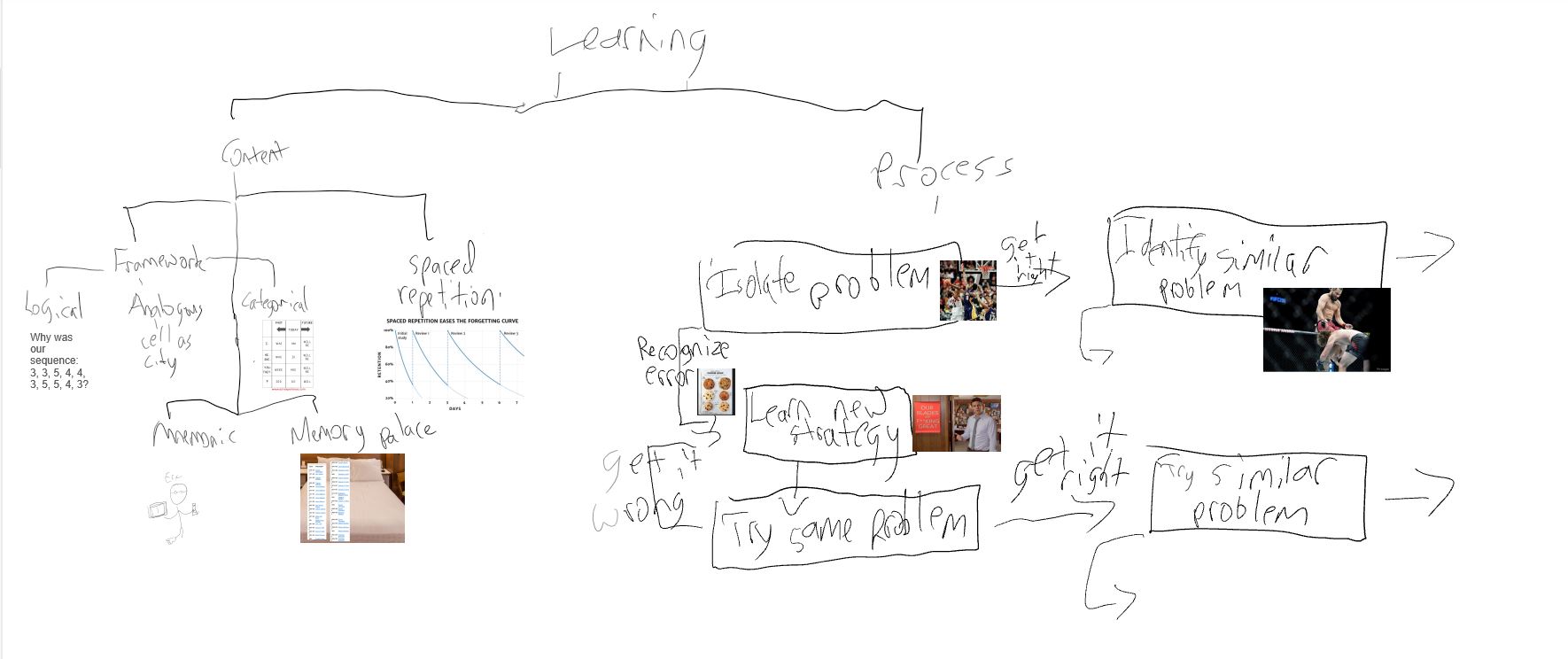Note: I wrote this after creating an app, 21st Night, which I genuinely believe can help anyone learn any subject, topic, or skill in a much more efficient way. I realized that’s a bold claim, so I decided to write this essay explaining how learning works, and how my app fits into an efficient learning process.
Table of Contents
Introduction
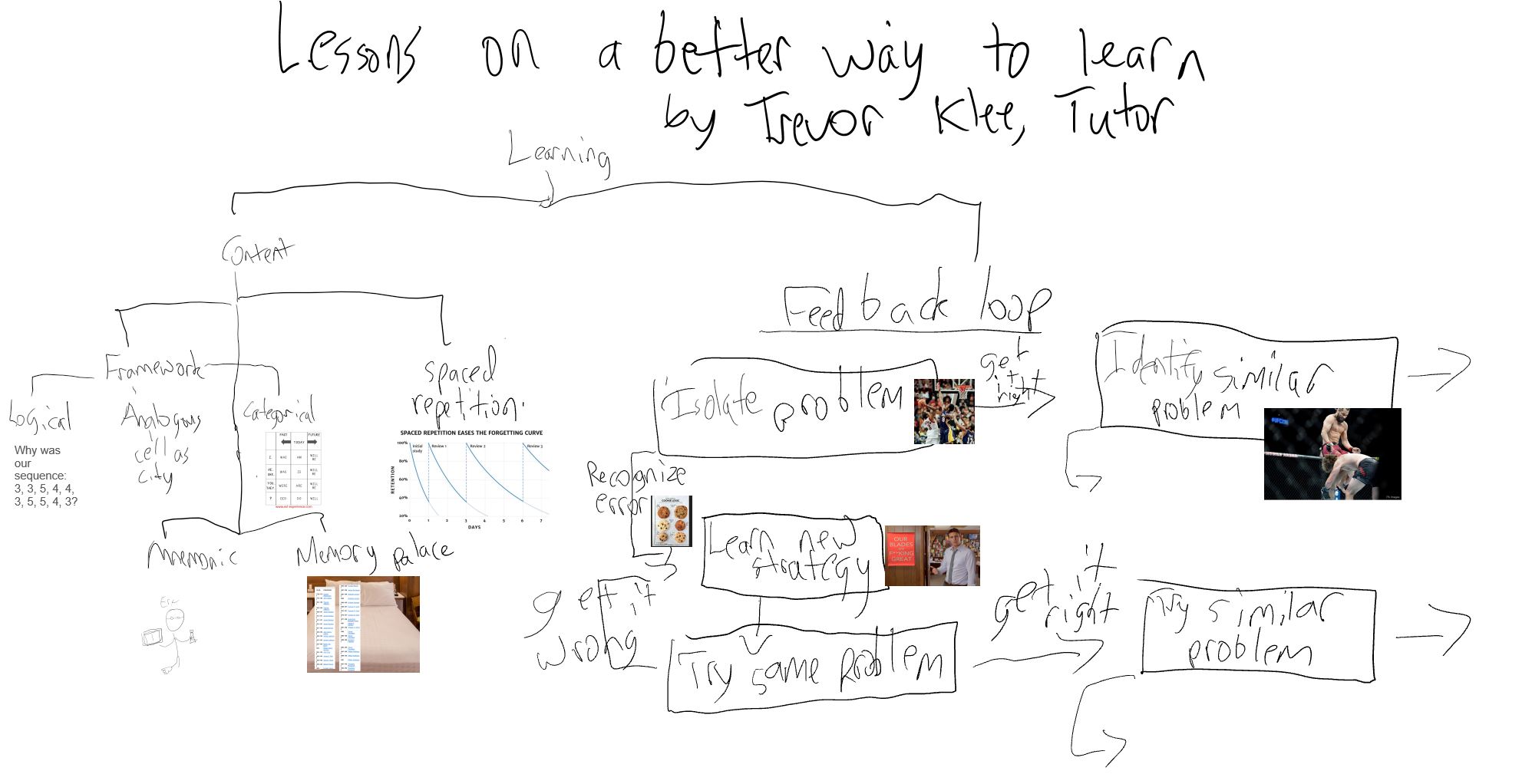
I start off this essay with a unique perspective on learning. I’m a graduate exam tutor, which means I teach grown men and women basic math, logic, and reading comprehension.
When I first started this job, I thought that most of my work would be literally teaching them these subjects. After all, that’s how most tutoring works.
But, I realized over the course of my work that, for most of my students, their issue was not that they had never been taught these subjects. The issue was that they had never really learned these subjects.
More importantly, they had never learned how to learn. Even clients of mine with degrees from Harvard and MIT had muddled through school with intelligence and hard work. Their understanding of how to actually learn was still at a grade school level.
And, to be honest, I didn’t really understand how to learn, either, until I started tutoring. I relied on my natural abilities to carry me through school, and, when that failed (like when I took linear algebra in college), I did not have a follow-up.
This essay is for those who could benefit from a better way to learn. If you’ve ever struggled or failed to learn a skill, concept, or topic, read on.
Lesson #1: There’s more than 1 type of learning
The school system is where most of us learn how to learn, at least supposedly.
The trouble is that the school system is based around a singular sort of model: the teacher gives a lecture, the students take notes, there’s homework every night, then a test at the end of the section. Then the teacher moves onto the next section.
This model works far better for classes like history than it does for math or French. Why? Because that’s a good model for content learning, but not process learning.
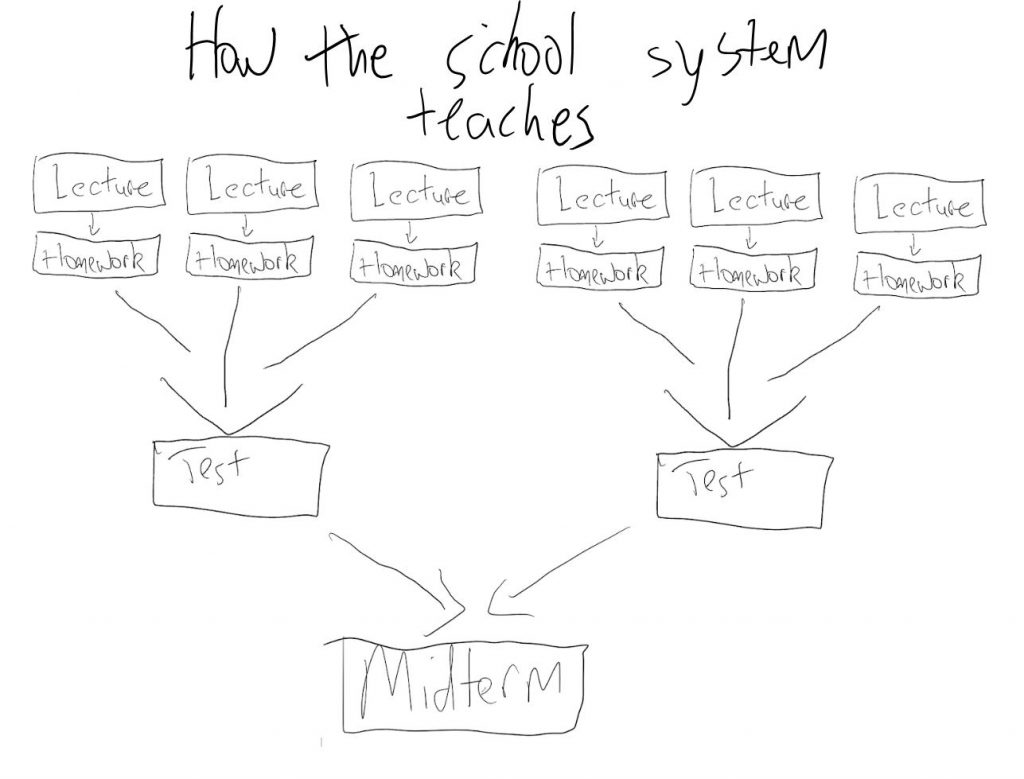
Content learning is basically the stuff that’s best learned by memorizing. You can’t reason through it: there’s no reason why George Washington was the name of America’s first president instead of Ronald McDonald. So, when a teacher tells you that George Washington was America’s first president, has you take notes on it, then tests you on it, that’s a reasonable way to learn that content.
Process learning, on the other hand, is skill based. You can reason through processes. A lot of smart kids have the experience of figuring out a way to solve a math problem before the teacher tells them. A lot of athletic kids figure out the best way to throw a football before their coach tells them. They reason through it.
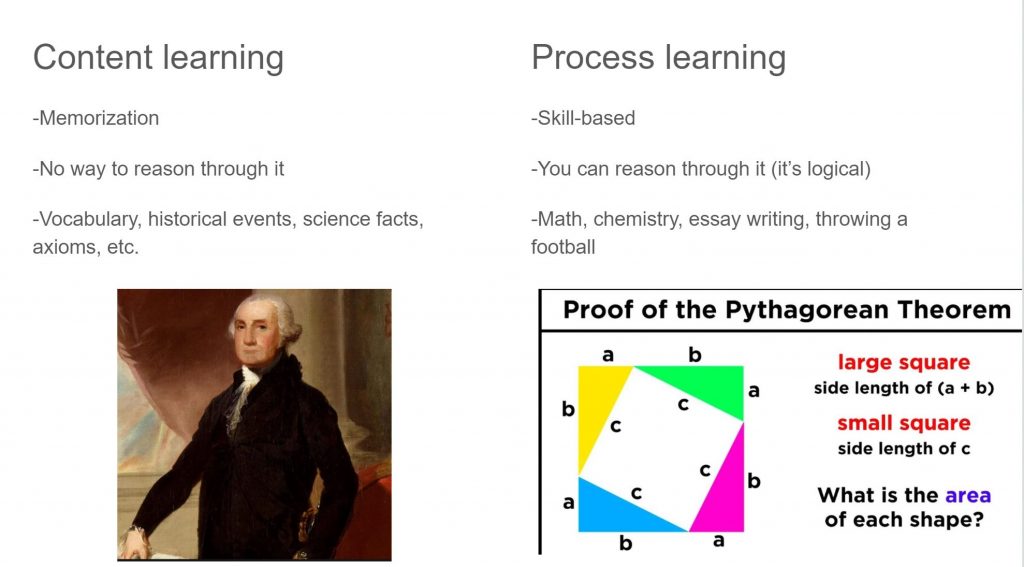
Process learning is not a good fit for the lecture, note, test model. You need to be able to refine your processes and recognize when to use them or not use them, which is not something that can be done solely through a lecture or even homework. Instead, it’s done through a feedback loop, which I’ll explore later.
Of course, this is not a perfect dichotomy. You can make people memorize a process, just as you can practice memorization and get better at it. But it’s still a useful distinction to make, especially when it comes to techniques to get better at learning either.
Lesson #2: Getting better at learning content is improving at recall
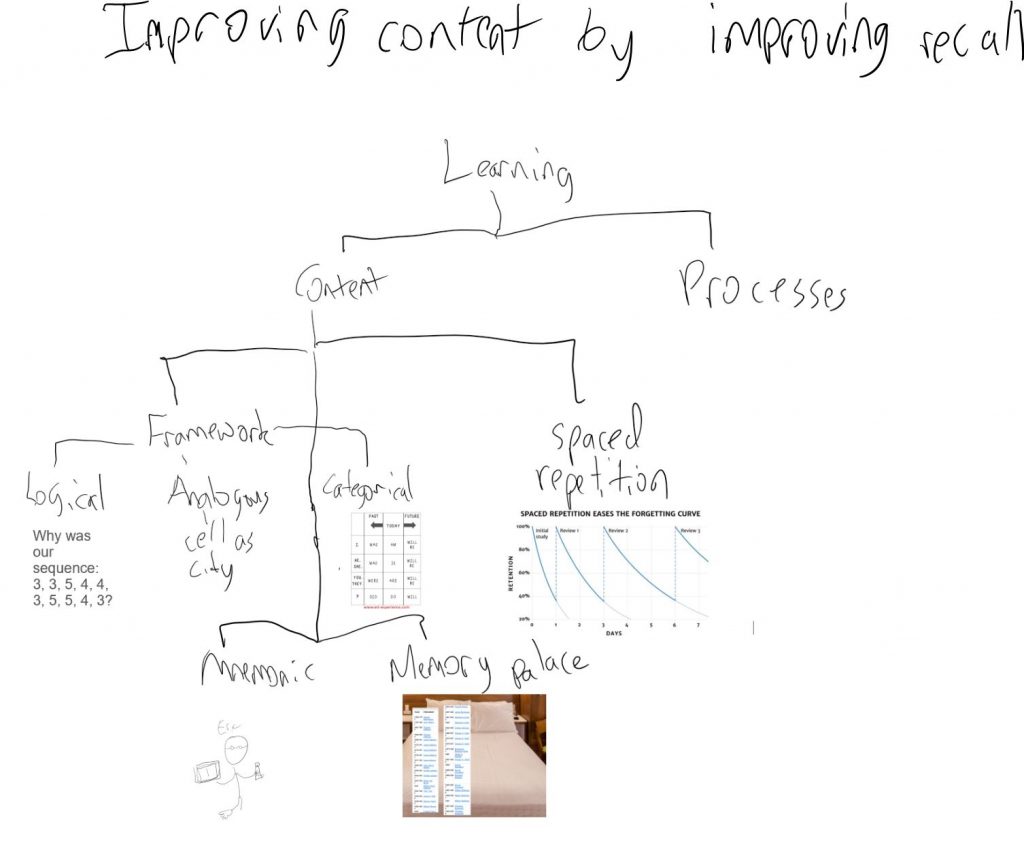
Learning content is a 2 step process: learn the information, recall it when asked.
In school, we’re tested on this constantly. Teachers will often test information straight from the notes they’ve given or from the textbook, which is why it’s possible to cheat on their tests by writing notes on your hand. It means that you no longer have to actively recall.
Unfortunately, students are never really encouraged to make the connection between recall and learning content. They’re often encouraged to make flashcards, for instance, but they’re not told that it’s because flashcards are literally practicing recall. And, when we practice things, we generally get better at them (a simple feedback loop).
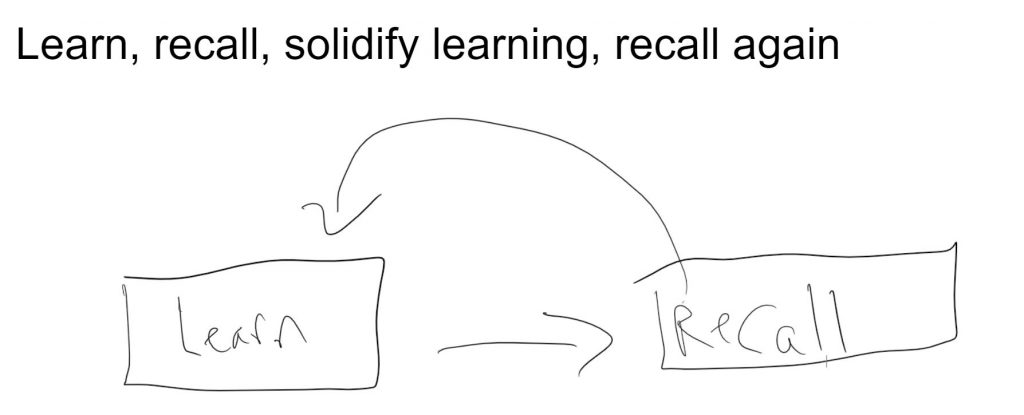
Instead, a lot of people try to just get better at learning content by exposing themselves to more of it. If they’re learning Japanese, they’ll watch some Japanese TV shows. If they want to learn about the history of WWII, they’ll buy a bunch of books and read them cover to cover. If they’re studying for a test, they’ll go through their textbook and highlight it.
Maybe you’ll watch a Japanese TV show and realize that you hear a word you recognize. When you think about the meaning of that word, that’s recall. Or, maybe you’ll read your WWII book and realize that one author discusses the Battle of Midway differently than another author. Again, as you think about the differences, that’s recall.
But it’s far more effective to learn content by actually practicing recalling it. After all, you don’t want to just learn it and be unable to recall it when the time comes. You will get better at recall by practicing recall. That’s it.
Of course, recall can be frustrating. As anyone who’s ever bombed a test can attest, not everything we try to remember we succeed at remembering. So how can we get better at learning recall and therefore learning content?
How to get better at recall
Recall technique 1: framework
Frameworks are vital to content learning. Without a framework, we have to expend enormous amounts of brainpower on memorization.
For instance, try to memorize this list of numbers without a framework: 3, 3, 5, 4, 4, 3, 5, 5, 4, 3. Now I’m going to test you on it.
Don’t look above when I ask you the question, ok?
Here’s the list, with one number deleted: 3, 3, 5, 4, 4, 5, 5, 4, 3. Which number did I delete?
Even if you can answer this without looking above, you really had to work hard. It would have been a lot easier if you had known the associated framework: 3 (one), 3 (two), 5 (three), 4 (four), etc.
The framework is just one thing to remember, as opposed to 10 numbers. Suddenly your content learning is much easier.
How can we use frameworks in our own learning? There are three ways:
- Logical frameworks
- Analogous frameworks
- Categorical framework
The number example from above was a logical framework, in that there was a simple rule to remember the list. Logical frameworks can be recognized by the word because. The second number is three because two has three letters.
Analogous frameworks are when we associate unfamiliar content with familiar content. For example, a really common way to learn the organelles of a cell is by analogy to a city. The mitochondria is the power plant. The membrane is the wall around the city. The nucleus is town hall. It’s easier to remember each organelle as we recall its place in the familiar content.
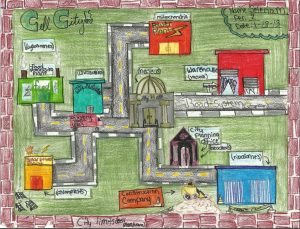
Last, there are categorical frameworks. Categorical frameworks rely on our innate ability to put things into categories by deductive reasoning. For example, a very common way to learn verbs in Romantic languages is by person and tense. I am, I was, I will be. He is, he was, he will be. They are, they were, they will be.
Recall technique 2: mnemonics and memory palaces
Framework is by far the most important of our recall techniques. Fortunately, we’re rarely taught things without any sort of a framework in school (with the noted exception of my 8th grade world history class, in which the final was memorizing the names of the countries of Africa, with zero prior context).
Something that’s mentioned less often in school is the use of recall aids like mnemonics and memory palaces. They usually come up randomly, like learning order of operations as PEMDAS or the colors of the rainbow as ROY G BIV.
If you find yourself unable to learn some content by just a framework, you can deliberately construct a mnemonic. If you need to learn a lot of content, you can construct a memory palace.
To construct a mnemonic, think about what the words look like or sound like. For example, imagine you need to memorize the word esoteric, which means something that requires specialized knowledge.
So, imagine a nerdy guy with eric with weird toes. As a nerd, he’s very familiar with specialized esotERIC knowledge.
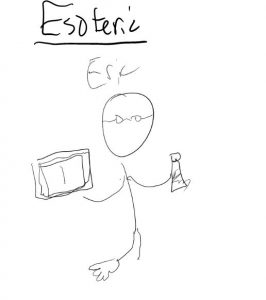
Memory palaces, on the other hand, are a way of recalling a lot of content by incorporating our spatial knowledge. As human beings, we are really, really good at remembering places and locations. If we associate this spatial knowledge with content, we can memorize a lot of content.
For example, imagine we need to recall a lot of American history content, starting with a list of every president and the date they served. Well, we can create an American history room of our memory palace, working from a room we know well.

Now, let’s make the bed our first stop, and therefore the location for our list of American presidents. We start at the top left corner of the bed, and imagine placing each name and date down the side of the bed. We have to physically imagine placing these names and dates, so we can get that spatial association.
It’s exhausting, and slow. Recalling this list will also be slow, because we’ll need to utilize our slow spatial memory of “looking” at our list on the bed. But there aren’t any better ways of memorizing a list of 45 names and dates.
To make this memory palace even better, we could associate it with mnemonics. We can imagine George Washing a Ton of clothes at the top of the bed, Michelangelo’s Adam right beneath him, etc.
Recall technique 3: spaced repetition
If you’re in the rationalist community or just a big memorizer, you’ve probably heard of spaced repetition. Anki is the biggest player in this field.
Spaced repetition simply works by reminding us of items as we’re about to forget them. It’s an ideal system because it’s effective, and because of its simplicity.
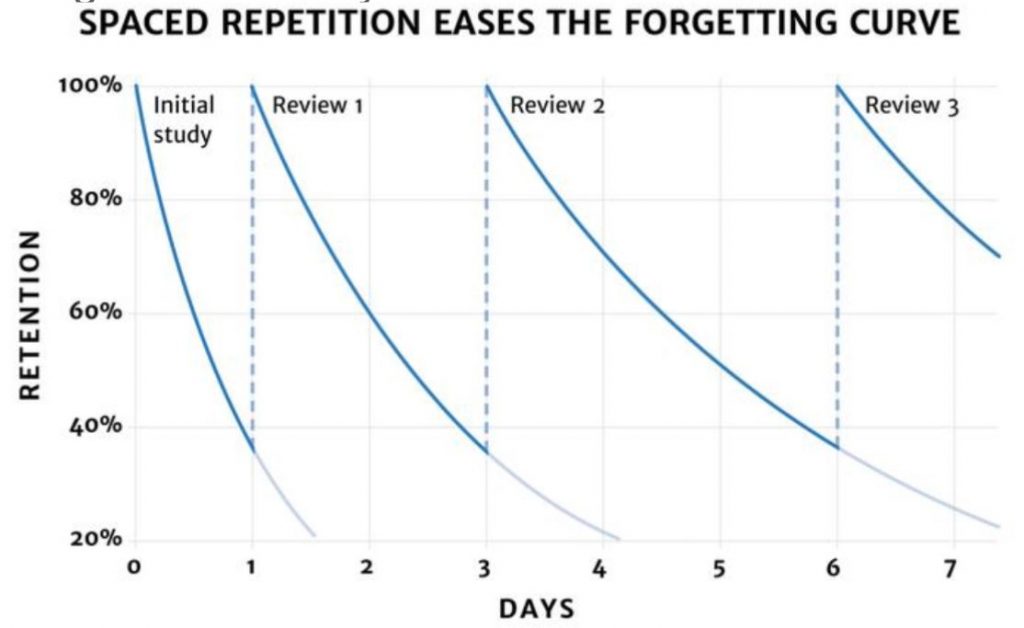
I’m a big fan, and it’s a big part of 21st Night. But, spaced repetition’s phrases have been sung enough. So, I’d rather issue a caveat:
Spaced repetition is great. It’s made much better with mnemonics and memory palaces, and spaced repetition is made almost useless without a framework.
So many new Ankians try to learn a language, concept, or subject by just using Anki flashcards. They make progress for a few weeks, then lose a day or two of studying and forget everything.
For example, I recently read a report by a guy who tried to learn the contents of the STEP exam (the most important exam in American medical school) solely by memorizing their Anki flashcards. As someone whose girlfriend recently suffered through STEP, I can assure you that’s an impossible task.
The way medical students learn STEP is by reading through their textbook first (First Aid is the most commonly used one), then using Anki to fill in the millions of details. In other words, they get a framework, and use Anki to fill in the details. They never, ever just try to fill in the details with Anki.
Also, spaced repetition requires active recall, not exposure. It is so often that people think because they’ve looked at something, that counts as repeating it. It does not.
If you’re just looking at something a bunch of times, you aren’t guaranteed to recall it. This is true even if your repetition is spaced. Only recall can improve recall.
Summary
Presumably this picture makes more sense now. We improve learning content by improving recall. We improve recall by frameworks (most important), mnemonics and memory palaces, and spaced repetition. Spaced repetition is not a miracle, but it is very helpful

Lesson #3: Learning processes is learning through a feedback loop
We’ve just covered learning content. That’s great. Now let’s cover learning processes.

Processes are what I spend most of my time teaching. When people are learning math, logic, or Brazilian Jiu Jitsu (a hobby of mine), they benefit from having an expert watch and correct them. I can give them personalized feedback in a way that a book cannot.
So, what is the learning process for a process? It’s as follows:
To learn a process, you need to be able to implement that process. This requires trial and error, not just recall.
It requires trial and error because learning a process includes learning when to implement that process (and when not to). Trial and error, meanwhile, comes in the form of a feedback loop: try a problem, get it wrong, learn a new strategy to solve the problem, and try the new strategy on a similar problem.
The ease of learning a process depends on how well it fits into this feedback loop. You can adjust processes so they fit into the feedback loop better.
If the previous is difficult to understand, there’s a diagram, and also a lot of elaboration ahead.
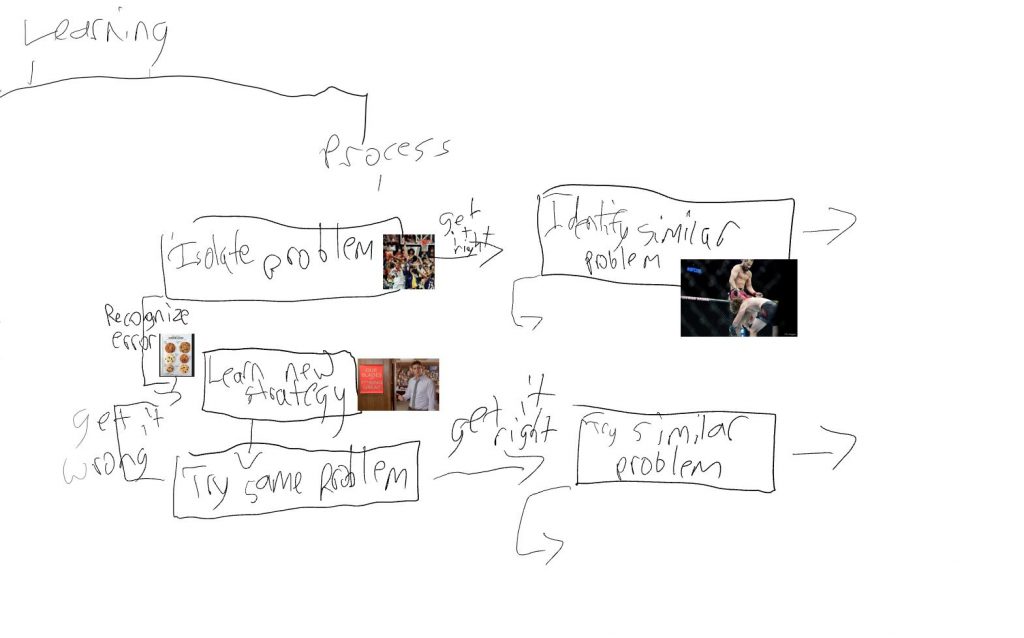
The feedback loop
As mentioned, learning processes comes in the form of a feedback loop.
1. Try a new problem. If you get it wrong, go to step 2.
2. Learn a new strategy to do it correctly.
3. Successfully apply the strategy to the old problem.
4. Attempt to apply the strategy to a similar problem.
When you learn to shoot a three pointer in basketball, each shot is an attempt at a new problem. If you miss the shot, you readjust your technique, and shoot again. Then, you’ll try to apply the same technique to a three pointer in a different spot.
When you learn to do quadratic equations in math, you try each homework problem. If you don’t get the correct answer, you have to adjust your strategy. Then you try a new homework problem with the same strategy.
When a bunch of students attempt to make a complex wheel roll quickly down a plane, they attempt new strategies to make it roll faster. Having achieved an incremental speed boost by adjusting one part of the wheel one way, they then try to achieve further speed boosts by adjusting other parts of the wheels in a similar way.
This feedback loop is everywhere, and, as you can tell, it’s frequently automatic. The feedback loop happens, the user benefits, and there’s no reason to change things. Change is only necessary when the feedback loop doesn’t work quite as it should. Then you have to adjust your approach to make the feedback loop work better.
Unfortunately, most feedback loops aren’t as perfect as the examples mentioned above. In that case, you have to adjust the process to get a more perfect feedback loop.
Transforming imperfect feedback loops into perfect ones
Perfect feedback loops have the following characteristics:
1. They address singular, concrete problems.
2. It’s really easy to tell when you make an error.
3. It’s easy to refine your strategy.
4. It’s easy to recognize similar situations.
Imperfect feedback loops lack one or more of these characteristics.
What if a problem isn’t singular or concrete?
As mentioned before, missing a 3 pointer on a practice court is a singular, concrete problem. If you messed up the 3, it was almost certainly your technique. To make the 3 pointer, you need to fix your shooting technique and that will solve the problem.
But what about improving your 3 pointers in game situations?
There’s not just one problem there to solve. You need to simultaneously ignore your tiredness, avoid your opponents, not get distracted by your teammates or the fans, stay calm, and shoot with good technique.
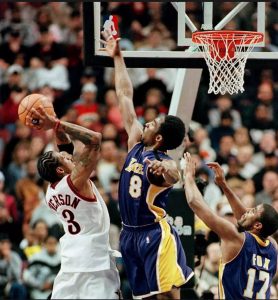
Any one of those problems can cause you to miss the 3 pointer. A good coach or particularly good self-analysis can isolate the problem to the pertinent ones. Otherwise, you’ll have to fix all the problems at once, which is a lot harder.
What if the error isn’t immediately obvious?
If you get an algebra problem wrong, you’ll see your error pretty quickly. You’ll see the answer in the back of the book, and then you have a couple written-out steps to check for your exact error (side note: this is a great reason to write out your work).
On the other hand, imagine baking some cookies. It’s a complicated recipe, but you think you followed it well. Unfortunately, at the end of the recipe you’re left with dry, hard, salty cookies.
You obviously made an error at one specific stage, but when? Did you bake the cookies too long or at too high of a heat? Did you add too much flour or salt?
If a coach or friend is beside you, they can point out your error immediately, before it ruins the whole batch of cookies. If they’re not there, you’ll have to just rerun the whole recipe, and hope that you don’t recognize your error only at the end again.

What if there aren’t clear strategies to improve your attempt?
If you want to improve your basketball shot, you can try shooting more like Kobe Bryant or Michael Jordan. It’s not easy to shoot like the greatest basketball players, but it’s a clear strategy.
But, imagine, like me, you’re attempting to make a theory of learning go “viral”. Or, at the very least, become popular.
On the one hand, there are a few clear ways that people have done that, namely by being famous professors and publishing in prestigious journals. Those ways are largely closed off to me.
On the other hand, there are the infinite number of other ways people have made things become popular. There’s social media, news organizations, door-to-door campaigning, advertising, etc. There’s no way for me to decide on one.
The best I can do is to find similar problems and draw my inspiration from those. Of course, finding similar problems is its own set of headaches…

How can we recognize similar problems?
It’s easy to find similar problems if you’re studying for a standardized test. Just look at the official test-prep material, and pick some questions in the same category.
It’s more difficult for a lot of real world examples. For instance, I’m a huge fan of mixed martial arts, or MMA. Some viewers might see it as barbaric, but I enjoy it for how its simple ruleset seems to lend itself to infinite strategies.
In MMA, it’s just two men (or two women), fighting until one of them gives up or is knocked out. There are a few safety precautions, but punching, kicking, kneeing, choking, tackling, and wrestling are all legal strategies.
Recently, there was a fight between an incredibly accomplished wrestler, Ben Askren, and a recently successful kickboxer, Jorge Masvidal. Ben Askren was undefeated. Jorge Masvidal was not.
Ben Askren had faced many, many kickboxers, and emerged victorious each time. He took them down to the ground and kept them there. There was no reason for him to assume his fight with Jorge Masvidal would end differently.
In other words, he assumed Jorge Masvidal was a similar problem to those he had previously solved with aplomb.
And that’s how Ben Askren got knocked out with a flying knee to the face 5 seconds into the fight, the fastest knockout in UFC history.
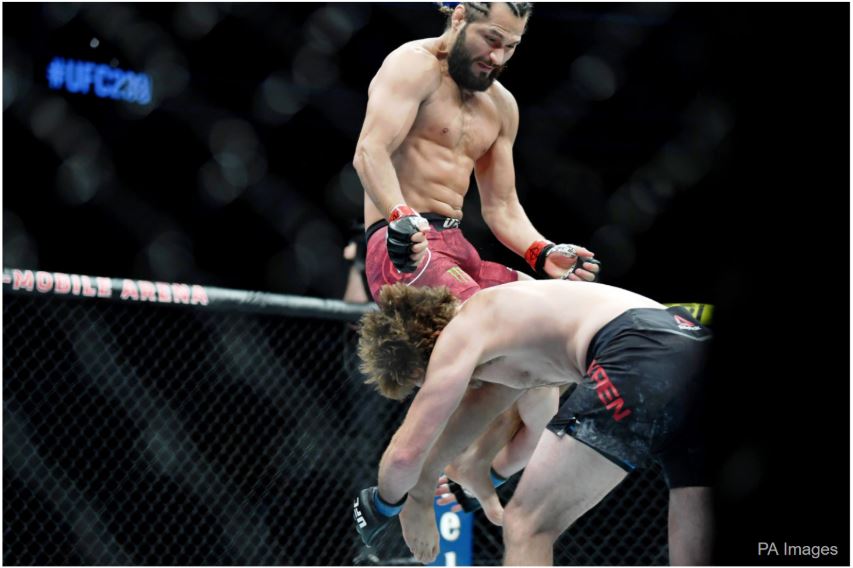
It was obvious after Ben Askren tried out his strategy that he needed to employ a new one against Masvidal. Unfortunately, by that point, the fight was over.
Ben Askren needed to go beyond the surface similarity of Masvidal’s style to others that he had fought. He needed to recognize that, in important ways, Masvidal was craftier and more skilled than the kickboxers he had fought before.
How I transform feedback loops in my own tutoring
As a tutor, I work solely with exams. I do my best to transform learning the processes that go along with the exams I teach into perfect feedback loops.
- I have my students focus their studying primarily on problems, rather than simply reviewing content. I encourage them to seek out problems they get wrong (rather than following their natural tendency to seek out questions they’ll find easy).
- When they get a problem wrong, I point out where in their thought process they got it wrong. I also help them organize their thought process so that it is ordered and linear, like by writing out problems step-by-step. This makes it easier to pinpoint mistakes, as opposed to letting them do problems entirely in their head.
- I teach them strategies for each sort of question, and I teach them how to recognize when a strategy applies and when it doesn’t. I show them the key words and set ups to watch out for. Through spaced repetition, I help them remember the strategies and the indicators to use a certain strategy.
- I’ve already organized the problems they do by category (or use material which does so), so finding similar problems is easy.
Anybody attempting to teach a process, whether a teacher, coach, or someone attempting to teach themselves, would be well-advised to structure their teaching in the same way.
The relationship of feedback loops to expertise
when we think about experts in a certain process, we often refer to people who seem to be impossibly good at something. It seems like they’re thinking fundamentally differently from others. Think of a math whiz who can solve an impossible problem, or a star quarterback who’s miraculously able to pull off incredible comebacks time after time.
The first part of expertise is, of course, experience in getting things wrong. As the saying goes, “The master has forgotten more than the beginner has ever learned.”
But, beyond that, experts tend to use their memory and their experience to develop a knowledge of many strategies and an ability to recognize deep similarities. For instance, Peyton Manning remembered a specific play from 16 years previous in order to prepare for a certain game.
Meanwhile, you can listen to Jeff Bezos talk about the smartest guy he knew at Princeton, who solved a seemingly impossible math problem. How? He recognized the deep, hidden similarity between that math problem and one he solved the year previous.
Experts, in short, remember and have mastered an incredible number of strategies. They are then able to apply these myriad strategies to problems that are similar in deep, hidden ways. That’s what makes their expert abilities work, from Richard Feynman’s seemingly magic math abilities to Giorgio Petrosyan’s surgical expertise in shutting down other kickboxers.
Expertise comes from feedback loops. Do enough feedback loops and you can be an expert, too.

Lesson #4: trying to embody these lessons in an app
I wrote this essay to attempt to explain an app that I’ve been working on with the help of a couple developers: 21st Night. The app is an attempt to make it as easy as possible for people to use feedback loops to improve their learning through an error log.
This app has been a learning experience for me. I’m not a coder myself (although I’ve dabbled), so it’s outside of my comfort zone. On a business development level, I’ve made 2 personal finance apps and 1 WordPress theme (website template).
The personal finance apps didn’t sell at all, while the WordPress theme did sell but was not a particularly good product. So, I’ve largely stopped selling it.
I think I’ve addressed the errors from my previous app development efforts, but app development has a long and uncertain feedback cycle.
It’s not easily broken up into problems, although people try with methodologies like Lean Startup, which attempts to enter feedback loops as quickly as possible with both an app idea and the app itself.
21st Night, in case you can’t tell, is something I strongly believe in. I think it can help people learn much more quickly and learn things that they considered impossible. It does so by the following:
1. It makes it easy to break down what a student is trying to learn into problems in a flashcard-like system.
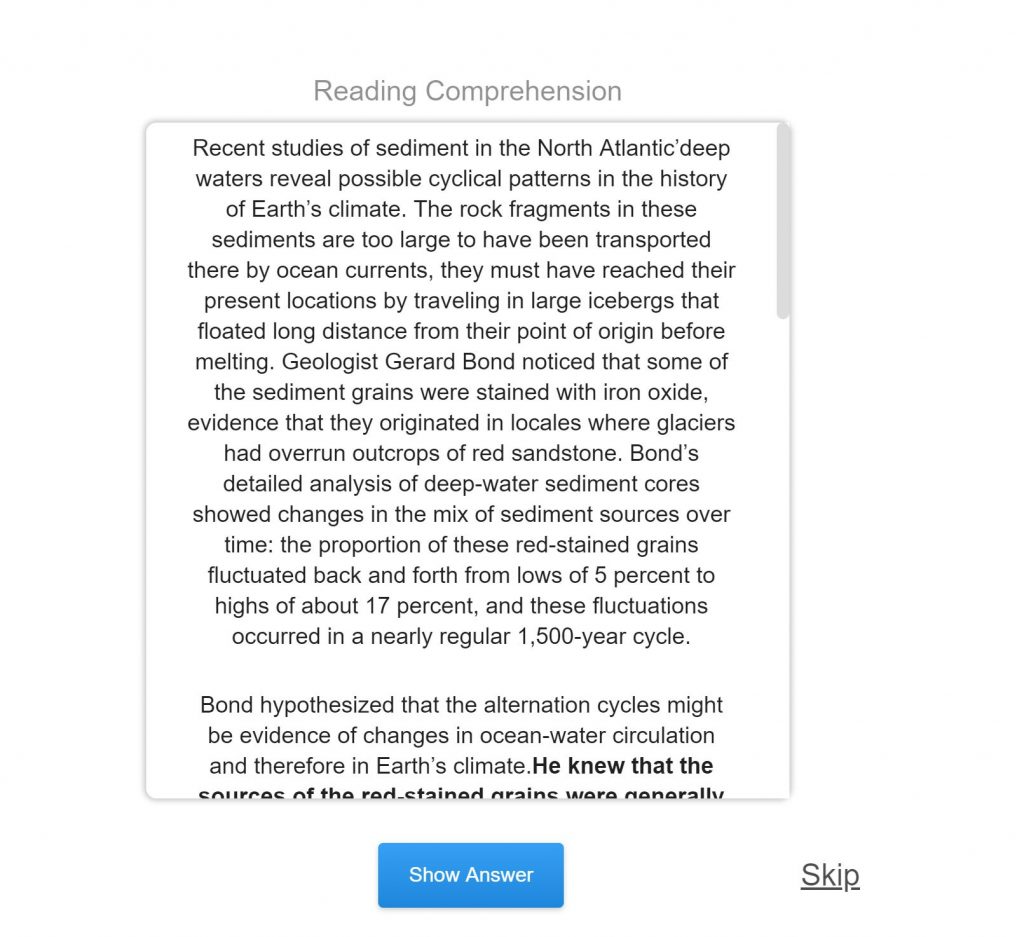
2. It encourages students to keep working through their mistakes every day through a streak system.

3. It makes students think explicitly about how to solve problems and how to recognize similar problems by introducing hint and answer explanation fields.
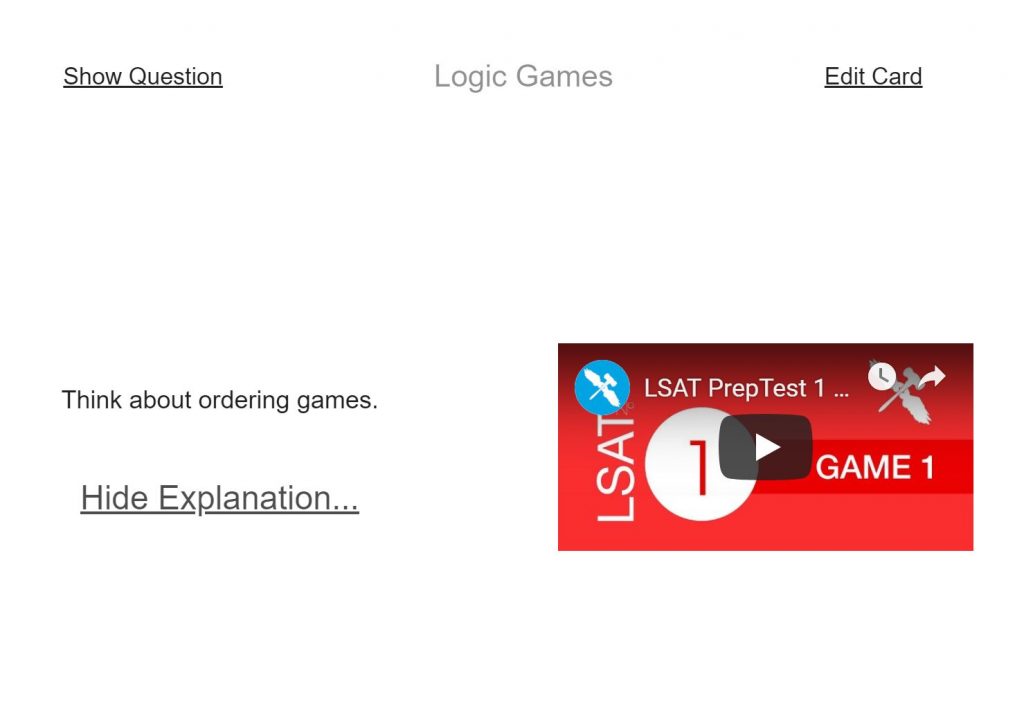
4. It has students redo problems through spaced repetition, so that strategies and when to use them are memorized.
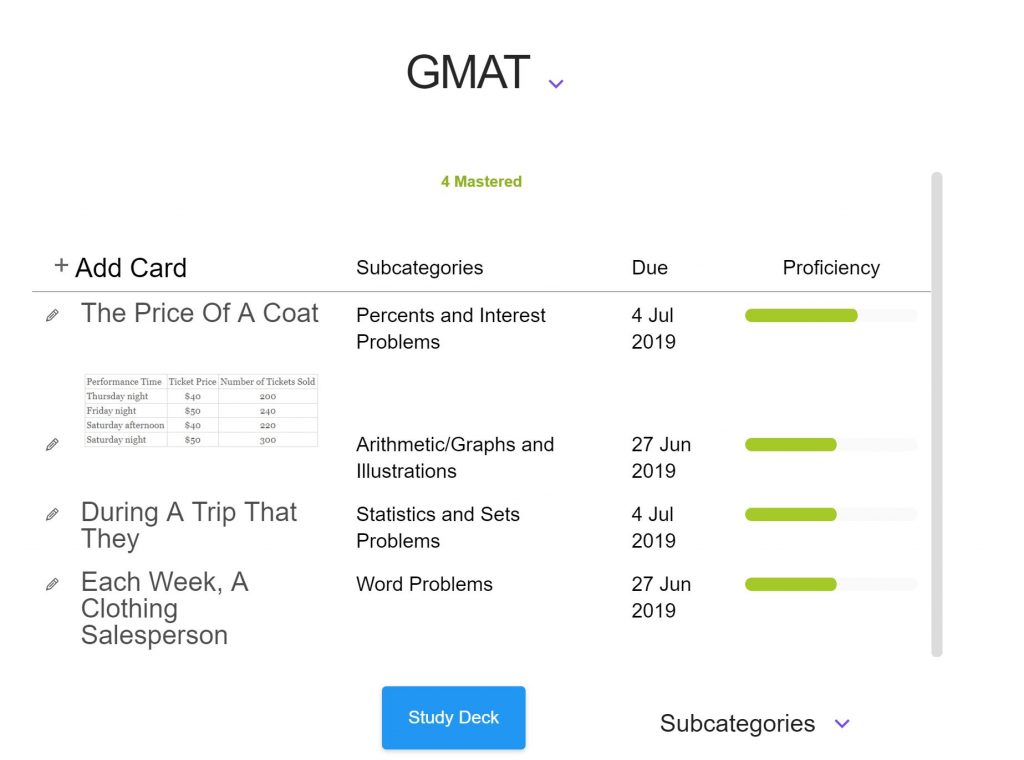
While the app’s marketing is targeted towards exam takers, I truly believe that this app is appropriate for all process learning. It can also, of course, be applied to content learning, and used as a simple flashcard app.
I have a vision of students around the world being taught how to learn and encouraged to teach themselves, instead of being straightjacketed into learning models that barely fit content learning and don’t fit process learning at all.
I’d want to see students one day be allowed to master topics problem by problem, memorizing as they go at their own pace, rather than being ushered to the next subject and never seeing the previous one again.
In that utopian future, American students might even come out of high school actually being able to speak Spanish or French like every multilingual country manages to do, rather than only knowing how to ask to go to the bathroom.
But that future is far away, if it ever comes. For now, there’s the lessons you learned from this essay and my app. You’ve read one, now come check out the other.
